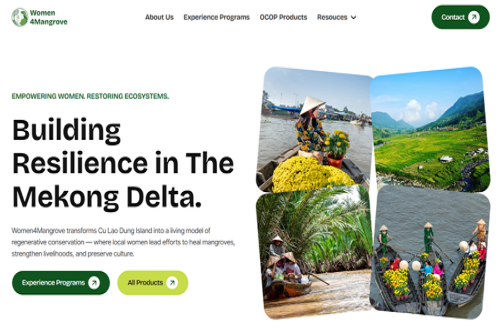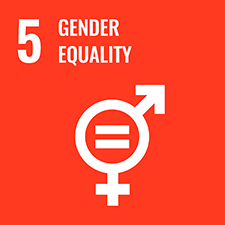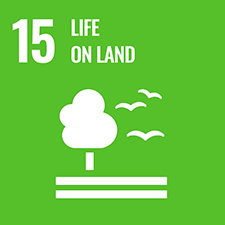![[Podcast] Sustainable Restructuring of the Southeast Economic Region (Part 3): Perspectives on Regional Restructuring](/images/upload/img_background/ueh-bg-101407-051023.png)
[Podcast] Sustainable Restructuring of the Southeast Economic Region (Part 3): Perspectives on Regional Restructuring
10 May, 2023
The Southeast Region has been making important contributions to the growth and the development of the whole country; on the other hand, it is facing the challenge of economic recovery and moving towards sustainable development in the long term. Confronting this problem, University of Economics Ho Chi Minh City (UEH) has been making efforts to contribute towards the development of the Region through research and consulting activities. In this article, the author group analyzed the bottlenecks in the development of the Region, from which, proposing structural policies or implemented mid- and long-term restructuring to ensure sustainable development of the Region.
In accordance with the analysis regarding the bottlenecks and the limitations resulted from these bottlenecks mentioned in Part 1 and Part 2, the author group has proposed personal perspectives concerning the restructuring the Southeast Region as follows.
Enhancing the quality of economic structure in the Southeast Region
Perspectives on economic restructuring in the Southeast Region is presented as follows: Towards the driving force in the development of economic sectors in terms of efficiency and innovation is the target of focusing and using technology, innovating the growth model with the purpose of boosting governance efficiency. The region aims to break the low-skilled labor-intensive and capital- and resource-intensive bottlenecks. In the period from 2022 and earlier, the Development Area is mainly dependent upon the intensive use of input factors listed as: low-skilled labor, capital intensive, energy intensive, and land resource intensive. In other words, it is the status quo growth mainly from inputs despite GDP income is 40% higher than that of the national average and, currently, approximately over $6,000/person at the 2022 timeline. This figure is expected to be striving to reach 14,500 USD in 2023 and the vision of a developing region worthy of Southeast Asia in terms of attracting talent and being one international financial and logistics center.
The Southeast Economic Region needs to create an effective ecosystem for the transformation and the development of existing industries in accordance with an effective/innovative approach associated with ICT elements. Transforming the refined food processing (LTTP) industry from the traditional approach to the LTTP processing ecosystem are associated with smart farms: reducing input costs that are being scarce, improving key economic regional linkages in terms of raw materials as well as contributing to enhancing quality-value-competitiveness in exports. Transforming generations of SMEs implies various limitations in all industries/services of the Region into innovative SMEs, and associated with start-ups following a new business model that integrates ICT elements.
Gradually restructuring Industrial Zones (IZs) in the Region, especially those located near the centers of the cities in the Region, towards eco-industrial parks, must be in compliance with UNIDO approach (2014) and Decree No. 35 2022/ND-CP. A suitable long-term and sustainable model for the post-industrial period of the region’s export processing zones-industrial parks will orient the long-term towards the eco-industrial park model with urban-related variations concerning great urban centers/ commerce/ service. UNIDO proposed Ho Chi Minh City as a Regional megacity to pilot Eco-Industrial Park for Hiep Phuoc Industrial Park and to expand to other IPs with ecological-urban-logistics variant. This pilot implementation scenario should be replicated to other provinces in the Region listed as Binh Duong and Dong Nai towards other industrial zones with potential for transformation.
Existing IPs in the region must be supported by local authorities and the Regional Council to supplement ecosystems so as to gradually convert into green/eco-industrial parks with the purpose of gradually forming an industrial symbiotic ecosystem with additional contents.
Concurrently, expanding the development space and strengthen regional connectivity, regional connectivity is to be conducted through completing the transport system connecting the region, forming a super economic zone.
Building E-Logistics Centers connecting the Region is to promote intra-regional goods circulation and the effectively flow of export goods from the Region towards the direction of reducing overall costs in order to take advantage of the country’s large trade openness. The region includes one Logistics center in accordance with digital transformation approach besides the investment in developing a logistics system specializing in food at the Regional level.
Regional Council with a superior mechanism for Regional investment and governance
Although the Council of the Southern Key Economic Region (including the Southeast) has been formed at the third level; in other words, effective Regional institutions must ensure a superior mechanism to be operated with high legality, regulatory tools and so on. The implementation is the Regional Planning and Public Investment Resources that the national budget assigns to the Regional Council to deal with regional issues (listed as: the governance of the whole Region’s innovation ecosystem, regional resource management, product management region’s production and consumption, Regional database management, and Regional linkage management through the design and the implementation of Regional transport infrastructure systems) are not strong enough because they have not been able to connect resources due to operation in accordance to administrative boundaries. What matters is that there has been no common guiding force to realize the interests of the Region even though a chairperson of the Regional council on a rotating basis is available.
Actually, the Regional Council has not been effective for, at least, the last 10 years of its existence; nevertheless, the institutions that decide regional issues have not been clearly demonstrated, especially the working mechanism of the Regional Council which has become more confused and passive does not even operate in the context of social distancing that disrupts the supply chain.
Resolution 54/QH on the specific mechanism for Ho Chi Minh City is the leading locality in the Region in various aspects. Although it has more autonomy in mobilizing resources for group A projects approved by the Council, it has been being limited due to the fact that, after the two-year pandemic, many shortcomings have been taking place in terms of the policies upon implementation. As a result, the effectiveness is not high and the bottlenecks of HCMC have not been solved. Therefore, the Regional Council cannot follow the specific mechanism approach; however, the Regional Council must have a superior mechanism to attract and to exploit the public investment resources in order to solve those problems concerning not only for HCMC but also other stakeholders as well as other issues related to the whole Region.
Consequently, the Regional Council should be able to make resolutions related to issues of the Region whether national or local projects that have an impact on the Region in the areas of water resources and property governance in common areas listed as river basins, Regional environmental issues, Regional transport links, regional food safety, and cooperation in division of labor along the Regional industrial value chains.
Recommendations in terms of political level and Regional governance policies
At State and Ministries level, recommendations are as follows: Researching and applying a unified food safety management model at the national level. The Government will study and legalize the food safety control mechanism at the Regional level and develop a Regional state food safety management institution. Unifying production standards for agricultural products and food and make it mandatory to apply in accordance with the roadmap. Strictly regulating the production, the trade and the use of agrochemicals and foodstuffs.
|
Criteria |
Development stages of the Southern Key Economic Region
|
||||
Stage 1
Motivation from resources
|
Transition from Stage 1 to Stage 2
|
Stage 2
Motivation from production efficiency
|
Transition from Stage 2 to Stage 3
|
Stage 3
Motivation from innovation and creativity
|
|
GRDP/Regional person (USD)
|
Below 2.000 |
2.000-4.999 |
5.000-8.999 |
9.000-17.000 |
Above 17.000 |
GRDP Divergence /Regional person
|
1990-2000 |
2000-2020 |
2020-2025 |
2025-2030 |
2030-2045 |
Growth based on capital, labor, resources
|
60% |
50% |
40% |
30% |
20% |
Efficiency-based growth
|
40% |
45% |
50% |
55% |
55% |
Innovation-driven growth
|
0% |
5% |
10% |
15% |
25% |
Implementing Regional restructuring must both be created through a legally effective Regional Council and have a superior mechanism to mobilize resources towards implementing regional issues listed as linking production and consumption towards food safety, linking localities in the region to solve Regional environmental problems and Regional connection traffic, aiming at targets in each phase
Regarding regional-level management of supply chains, further recommendations are as follows: Unifying legalization, consistently applying commodity standards for agricultural products and foodstuffs and having an appropriate roadmap for the production side; Building information system on production and trade of agricultural and aquatic products at Regional level; Developing a Regional plan for production and consumption of safe agricultural products and food. In addition, it is necessary to effectively manage Regional water resources.
Please view the full paper titled Southeast Economic Region: Current Development Situation and Suggestions for Sustainable Restructuring AT HERE. Author: Prof. Dr. Nguyen Trong Hoai - Editor-in-chief of Journal of Asian Business and Economic Studies (JABES), University of Economics Ho Chi Minh City (UEH).
This is an article in the series of articles spreading research and applied knowledge from UEH with “Research Contribution for All - Nghiên Cứu Vì Cộng Đồng” message, UEH cordially invites Dear readers to look forward to the upcoming Knowledge Newsletter DIGITAL ECONOMY #72
News, photos: Author, UEH Department of Marketing and Communication
Voice of: Ngọc Quí



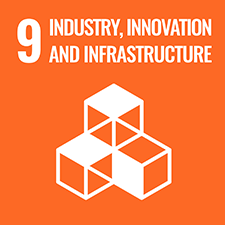
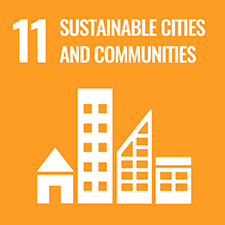
![[Research Contribution] Determinants impacting young consumers purchasing behavioral intention on sustainable fashion: exploration in Ho Chi Minh City](/images/upload/thumbnail/ueh-thumbnail-639035712273480983.png)
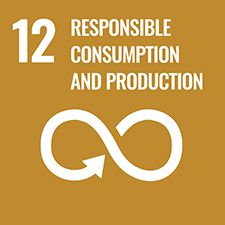

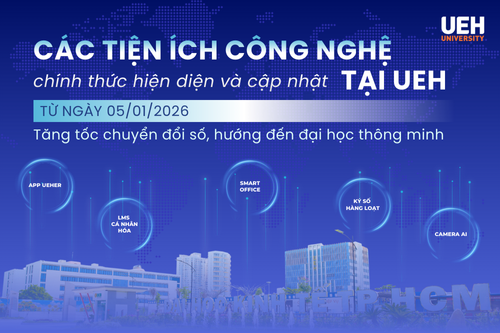

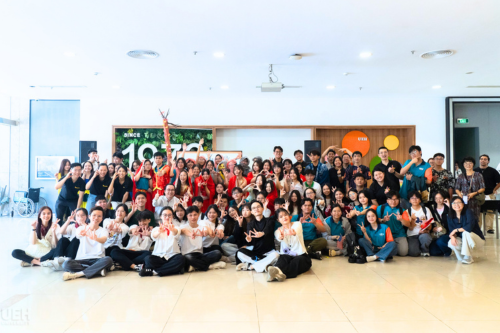
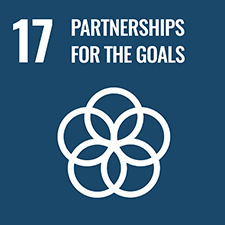
![[Research Contribution] What influences UEH students’ attitudes toward the “UEH Zero Waste Campus” project](/images/upload/thumbnail/ueh-thumbnail-639033816949877456.png)
